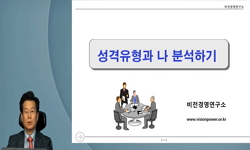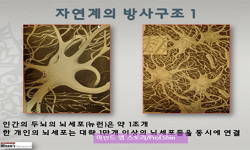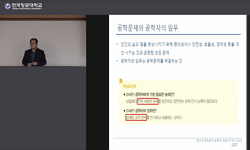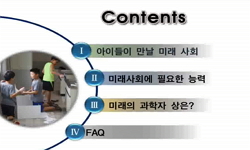The purposes of this study are to offer the visual and active learning opportunities through the mind mapping instruction and analyzing the effect of learning attitude side. Also, it focuses on the effects of the mind mapping instruction to leaner's p...
http://chineseinput.net/에서 pinyin(병음)방식으로 중국어를 변환할 수 있습니다.
변환된 중국어를 복사하여 사용하시면 됩니다.
- 中文 을 입력하시려면 zhongwen을 입력하시고 space를누르시면됩니다.
- 北京 을 입력하시려면 beijing을 입력하시고 space를 누르시면 됩니다.
마인드맵 수업이 학습태도에 미치는 효과 및 성격유형에 따른 그림 분석 = The Effect of Mind Mapping Instruction on Learning Attitude and the Analysis of Pictures according to Personality Type
한글로보기https://www.riss.kr/link?id=T11477855
- 저자
-
발행사항
전주: 전북대학교 교육대학원, 2008
-
학위논문사항
학위논문(석사) -- 전북대학교 교육대학원 교육대학원 , 교육학(교육방법) , 2008. 8
-
발행연도
2008
-
작성언어
한국어
- 주제어
-
DDC
370
-
발행국(도시)
전북특별자치도
-
기타서명
The Effect of Mind Mapping Instruction on Learning Attitude and the Analysis of Pictures according to Personality Type
-
형태사항
v, 73 p: 삽도; 26 cm.
- 일반주기명
- 소장기관
-
0
상세조회 -
0
다운로드
부가정보
다국어 초록 (Multilingual Abstract)
The purposes of this study are to offer the visual and active learning opportunities through the mind mapping instruction and analyzing the effect of learning attitude side. Also, it focuses on the effects of the mind mapping instruction to leaner's personality type.
The research questions of the study are as follows:
First, are there changes of leaner's attitude through the politics class of social studies using the mind mapping?
Second, are there different results of mind mapping activity according to such learner's personality type as introversion or extroversion?
To solve these questions, at first this study reviewed the leading studies and theories about features, rules and stages of mind mapping. Also, new mind mapping style is developed and applied based on the analysis of the conceptions, goals and contents of politics class of social studies in an elementary school.
The sixty eight students who were the subjects lived in Jeonju and were 6th graders of an elementary school. Term of study was 10 weeks and conducted the test of learning attitude to social study and personality. Also it was that to analyze the individual personality type interview.
All statistical data were analyzed by SPSS(ver 12.0)program, and to verify the result T-value was used in significance level was within 5%. Also to analyze the pictures according to personality type, 2 students of extrovert and introvert were selected, and their sheets of study and results of interview were analyzed.
The results are as follows:
First, introduction of mind mapping made significant progress in student's attitude to learning. Reviewing the result, it was found that subjects had more interesting in ways of study and social studies. And the students had more confidence for learning and ability of presentation. Also, students wanted to understand the contents of social study, use the mind mapping steadily and apply to other subject matter.
Second, it was different in the result of picture of mind mapping according to personality type-learner's extrovert and introvert style. In other words, introvert students made the sheet to indicate their own clever ideas, and they needed more time to work for revising the thinking and expression stage. For the same reason they take more time to express their own opinion.
Finally, introvert students use the mind mapping for satisfaction of themselves not showing to others.
On the other hands, extrovert students have a tendency to show their result of paper to others. When they did the paper work, they used unique images or decorated with showy colors. And they progressively participated in presentation activity. But they were inattentive or missed the contents when they were doing mind mapping. Also they worked it extempore and had many revisions.
After this study, the effect of mind mapping is verified in more classes with progressive practices, and it should be developed new plans to use mind mapping more variously.
목차 (Table of Contents)
- Ⅰ. 서론 = 01
- A. 연구의 필요성 = 01
- B. 연구 문제 = 03
- C. 연구 변인의 정의 = 03
- D. 연구의 제한점 = 04
- Ⅰ. 서론 = 01
- A. 연구의 필요성 = 01
- B. 연구 문제 = 03
- C. 연구 변인의 정의 = 03
- D. 연구의 제한점 = 04
- Ⅱ. 이론적 배경 = 06
- A. 마인드맵 = 06
- B. 아동용 성격 유형 검사(MMTIC)와 성격 유형 = 10
- C. 초등사회과 정치교육 = 14
- Ⅲ. 연구가설 설정 = 18
- Ⅳ. 연구방법 = 19
- A. 연구대상 = 19
- B. 수업 설계 및 적용 = 20
- C. 측정 도구 및 자료의 통계적 처리 = 29
- Ⅴ. 결과 분석 및 해석 = 32
- A. 사회과 학습태도 검사 결과 분석 = 32
- B. 성격 유형에 따른 그림 분석 = 36
- Ⅵ. 결론 = 43
- A. 요약 및 결론 = 43
- B. 논의 및 제언 = 44
- 참고문헌 = 46
- 부록 = 48












